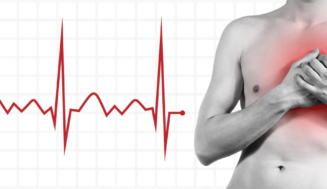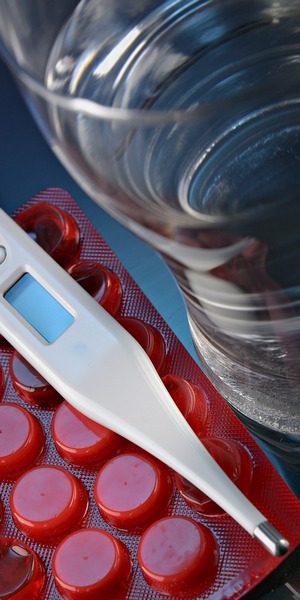Appendicitis or Ovarian Cyst: Abdominal Pain Dilemma

Experiencing abdominal discomfort can be unsettling, especially when its origin is uncertain. Appendicitis and ovarian cysts are potential sources of abdominal pain, each presenting distinct symptoms and implications.
In this comprehensive guide, we will elucidate the disparities between appendicitis and ovarian cysts, equipping you with the knowledge necessary to distinguish between them. Furthermore, we will provide up-to-date insights into these conditions to assist you in making informed healthcare decisions.
A Closer Look at Appendicitis and Ovarian Cysts
Before we delve into differentiating between appendicitis and ovarian cysts, let’s briefly comprehend the nature of each condition and their underlying causes.
Understanding Appendicitis
Appendicitis involves the inflammation of the appendix, a small tube-shaped organ located in the lower right abdomen. Left untreated, an inflamed appendix can lead to severe complications, including a ruptured appendix and widespread infection.
Common symptoms of appendicitis include:
- Abdominal Pain: Appendicitis typically begins with pain around the navel and later shifts to the lower right abdomen, intensifying over time.
- Fever: Appendicitis may be accompanied by a mild fever.
- Nausea and Vomiting: Nausea and vomiting are common in individuals with appendicitis.
- Loss of Appetite: A diminished appetite is a frequent symptom.
- Rebound Tenderness: Applying pressure to the lower right abdomen and then releasing it elicits pain, known as rebound tenderness.
Understanding Ovarian Cysts
Ovarian cysts are fluid-filled sacs that develop within or on the surface of the ovaries. These cysts are typically benign but can cause discomfort and complications in certain instances.
Common symptoms of ovarian cysts include:
- Pelvic Pain: Ovarian cysts often result in pelvic discomfort, typically on one side.
- Irregular Menstrual Cycles: Some cysts can lead to irregular menstrual cycles.
- Bloating and Pressure: Women with ovarian cysts may experience abdominal bloating and a sensation of pelvic pressure.
- Pain During Intercourse: Pain or discomfort during sexual intercourse can be indicative.
- Frequent Urination: Large cysts may exert pressure on the bladder, leading to increased urination.
The Importance of Regular Check-Ups
Routine health check-ups are crucial for maintaining overall well-being, especially for women. Annual check-ups serve as an opportunity to monitor your health, detect potential issues early, and receive guidance on preventative measures.
For women, these appointments often include essential screenings and discussions about reproductive health, making them particularly valuable.
Here are a few reasons why regular check-ups are essential for women’s health:
- Early Detection of Conditions: Regular check-ups allow healthcare providers to spot any signs of potential health issues, such as breast cancer, cervical cancer, or ovarian cysts, at an early, more treatable stage.
- Reproductive Health: These appointments are an opportunity to discuss your menstrual cycle, birth control options, family planning, and any concerns related to fertility or menopause.
- Screenings: Many women-specific screenings, like mammograms, Pap smears, and bone density tests, are typically scheduled during annual check-ups to ensure early detection of conditions.
- Health Education: Regular appointments provide a platform for healthcare professionals to educate you about maintaining a healthy lifestyle, including nutrition, exercise, and stress management.
- Personalized Guidance: Discussing your specific health concerns and lifestyle choices with a healthcare provider allows for personalized recommendations and guidance tailored to your needs.
Recognizing Red Flags in Women’s Health
In addition to regular check-ups, it’s essential for women to be vigilant about their health and recognize potential red flags or symptoms that warrant prompt medical attention. While symptoms can vary greatly among individuals, there are some common signs that women should not ignore:
- Breast Changes: Any unusual changes in breast tissue, such as lumps, skin dimpling, nipple discharge, or persistent breast pain, should be evaluated by a healthcare provider, as they could indicate breast cancer.
- Abnormal Vaginal Bleeding: If you experience irregular or heavy menstrual bleeding, bleeding between periods, or bleeding after menopause, it’s crucial to consult a healthcare professional. These could be signs of conditions like uterine fibroids or endometrial cancer.
- Pelvic Pain: Chronic pelvic pain or discomfort, especially if it’s severe or accompanied by other symptoms like changes in bowel or bladder habits, can signal conditions like endometriosis, ovarian cysts, or pelvic inflammatory disease.
- Unexplained Weight Changes: Sudden and unexplained weight loss or gain can be indicative of various underlying health issues, including hormonal imbalances or thyroid disorders.
- Painful Intercourse: Persistent pain during sexual intercourse can be due to conditions like vulvodynia, infections, or endometriosis and should be discussed with a healthcare provider.
- Persistent Fatigue: Ongoing fatigue that doesn’t improve with rest could be a sign of anemia, thyroid disorders, or other underlying health problems.
- Changes in Skin: Skin changes such as new moles, changes in existing moles, or skin lesions that bleed, itch, or don’t heal should be examined by a dermatologist to rule out skin cancer.
Conclusion
Maintaining regular check-ups is crucial for women’s health, providing an opportunity for early detection and intervention. Additionally, being aware of potential red flags and promptly seeking medical attention for concerning symptoms can further safeguard your well-being. Your health is a priority, and proactive healthcare measures can help ensure a healthy and fulfilling life.








